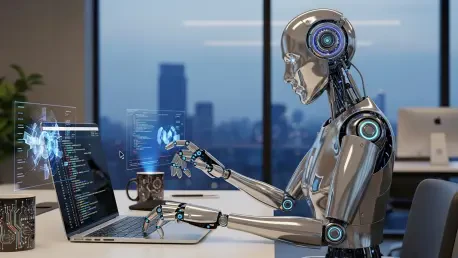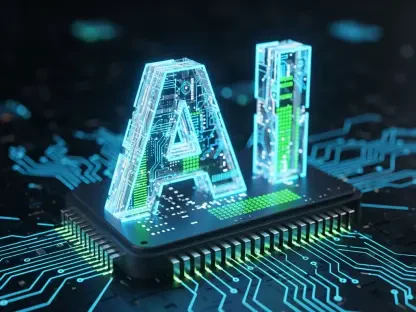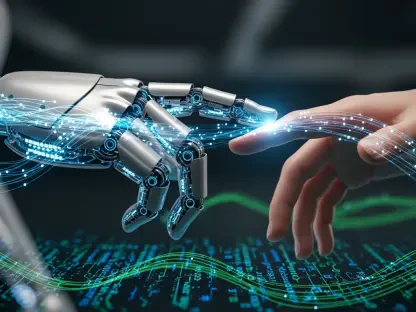Anand Naidu, a software development expert proficient in both frontend and backend technologies, joins us today to shed light on Amazon’s latest AI development tool, Kiro. This innovative IDE aims to revolutionize software project management by autonomously building, managing, and documenting entire projects. Let’s dive into the workings and aspirations of Kiro, exploring how it’s set to transform the landscape of AI in software development.
Can you give us an overview of Kiro and what makes it unique compared to other AI development tools?
Kiro stands out as a comprehensive AI-driven integrated development environment created by Amazon. Unlike typical AI tools that merely suggest code snippets, Kiro manages the entire lifecycle of software projects autonomously. It not only helps in coding but also in building, managing, and documenting projects. This comprehensive approach distinguishes Kiro by turning initial prototype codes into fully operational and maintainable software systems.
What inspired the development of Kiro, and what problems is it trying to solve in software development?
The inspiration behind Kiro emerged from the need to address the chaotic nature of AI-generated code, which, while quick to produce, often lacks sustainability. Kiro aims to bridge the gap between rapid coding prototypes and durable production systems by incorporating structured planning, systematic updates, and meticulous documentation. It targets common issues like maintaining design alignment and eliminating technical debt.
How does Kiro transition its projects from “vibe coding” to “viable code”?
Kiro facilitates the transition from “vibe coding” to “viable code” through a structured development process. It turns spontaneous, prototype-level code into rigorously documented production systems. Kiro’s AI agents autonomously create project roadmaps and technical documents, updating them as the project progresses, which ensures that the final product not only meets initial requirements but is also maintainable in the long run.
Can you explain how Kiro autonomously manages software projects?
Kiro uses AI agents that work independently to handle several aspects of software project management. These agents create and update project roadmaps, technical documentation, and testing artifacts as the project evolves. This autonomy allows Kiro to streamline workflows, manage changes effectively, and ensure that projects are executed smoothly without requiring constant manual oversight.
In what ways does Kiro ensure long-term maintainability of code?
Kiro focuses on long-term code maintainability by organizing developer prompts into components like design documents and task lists. This structured approach guides the implementation process and ensures that changes are adequately documented and tested. Kiro also runs automated checks to detect potential issues, making it easier to uphold quality and sustainability over time.
How does Kiro handle project roadmaps and technical documentation?
Kiro employs its AI agents to independently create detailed project roadmaps and technical documents. It ensures that these documents reflect the current state of the project, updating them with each significant change. This dynamic documentation capability eliminates the common discrepancies between planned and actual project outcomes, helping maintain clarity and consistency.
What steps does Kiro take to update documentation and testing artifacts when code changes?
Whenever there’s a change in the code, Kiro’s automated processes kick in to update the documentation and testing artifacts promptly. By keeping aligned with the latest development status, Kiro mitigates the risk of miscommunication and outdated information, ensuring that testing and documentation stay relevant and accurate.
What kind of automated checks does Kiro run when changes are made to files?
Kiro executes a variety of automated checks each time a file is modified. These can include routine operations like updating relevant documents, verifying coding standards, and scanning for potential issues. Such checks not only streamline the development process but also enhance the reliability and efficiency of software projects managed by Kiro.
How does Kiro compare with GitHub’s agent mode and Google’s Gemini Code Assist?
Kiro directly competes with platforms like GitHub’s agent mode and Google’s Gemini Code Assist by aiming to manage complete software lifecycles with minimal human intervention. While these other tools are largely focused on code suggestion and completion, Kiro extends further by autonomously managing project documentation, roadmaps, and ensuring long-term code sustainability.
Why did Amazon choose a low-key branding approach for Kiro?
Amazon’s decision to maintain a low profile for Kiro arises from strategic discretion, allowing the tool to stand independently and be evaluated on its merits. By subtly associating it with AWS through minimal branding, Amazon ensures that Kiro’s utility and impact are foregrounded, potentially reaching a broader audience without the bias of being an Amazon-branded tool.
Could you expand on the goal of eliminating tech debt and preserving institutional knowledge with Kiro?
Kiro tackles the pervasive issue of technical debt by keeping design alignment consistent and ensuring all changes are well-documented and rigorously tested. This approach retains critical institutional knowledge, especially as team members transition. By systematically capturing and organizing all project-related insights, Kiro keeps cumulative expertise accessible and relevant, mitigating the risk often posed by staff changes.
Can you explain the various pricing tiers for Kiro once it moves past the free preview phase?
Once Kiro exits its free preview phase, it will offer tiered pricing options. The basic plan will remain free, providing 50 agent interactions monthly. The Pro plan, costing $19 per month, increases this to 1,000 interactions, while the Pro+ plan at $39 per month allows for 3,000 interactions, catering to different levels of project complexity and scale.
What kind of feedback have you received from developers during Kiro’s preview phase?
Feedback from developers during Kiro’s preview phase has been largely positive, highlighting its efficiency in project management and documentation. Users have particularly appreciated its ability to seamlessly manage and update project components. However, suggestions for further enhancements are being considered to refine usability and expand feature offerings, ensuring Kiro continues to meet evolving developer needs.
How do you see Kiro impacting the future of AI in large-scale software development?
Kiro promises to push the boundaries of what AI can contribute to large-scale software projects. By automating and managing complex development processes, it addresses existing efficiency and sustainability challenges. As AI becomes more integral to software development, tools like Kiro can streamline operations and empower teams to focus on creative and strategic tasks rather than routine management.
What are some features that the Kiro team is working on for future updates?
The Kiro team is actively developing new features that will enhance its project management capabilities. Future updates are likely to include more advanced AI agents capable of handling even more complex tasks autonomously. Improvements in user interfaces, integration with other development tools, and expanded compatibility with various coding languages are also anticipated to keep Kiro at the forefront of AI-driven software development.
Do you have any advice for our readers?
In the ever-evolving field of software development, staying adaptable and open to new tools can greatly enhance productivity and innovation. Embracing AI solutions like Kiro can not only streamline your workflow but also free up valuable time to focus on creative problem-solving and design. Keep learning and exploring these new technologies to remain at the cutting edge of development practices.








